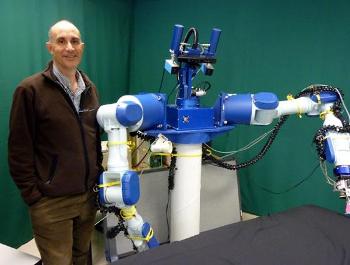Members of the European Union-funded study, EYESHOTS, have applied neuroscience in the development of vision in robots. They have designed robots that replicate spatial perception, vision and ability to grasp objects.
Experts from various fields including robotics, engineering, psychology and neuroscience collaborated in this endeavor. They applied human and animal biology and studied neurons of monkeys in visual-motor coordination.

EYESHOTS members have developed a three-dimensional visual system that is synchronized with the arms of the robots, enabling it to observe its surroundings and also remember the images. The human saccadic eye movement was the first feature that they replicated in the robot’s vision.
Humans constantly change their view-point of observation through fast eye movements. During this movement, they would not be able to visualize clearly as the images would be blurred. The human brain collates the fragmented images to provide a continuous image in the correct sequence. EYESHOTS members developed computer models of the brain section that integrates arm and eye movements with the images. They simulated human learning mechanisms in the robot enabling it to learn to look, construct an image of the environment, preserve the necessary images and then move its arm to grasp the objects.
The findings of EYESHOTS members were validated by the Universitat Jaume I’s Robotic Intelligence Laboratory with a robotic system having moving eyes and articulated arms from the University of Castellón.